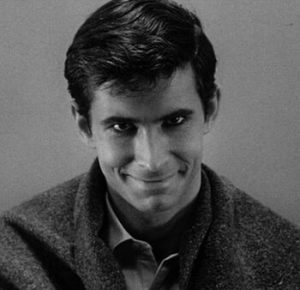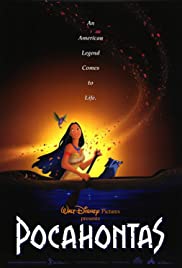Green Grass Running Water by Thomas King is full of allusions and connections to the works beyond the novel itself. Below are a few that caught my attention:
N. Bates
For horror fanatics or anyone who has been on the internet for long enough, this allusion to Norman Bates in Hitchcock’s Psycho is obvious. An incredibly strange interaction accompanies this easter egg. Jane Flick notes that rather than Bates Motel like in the film, it is a “lodge, for Indian dwelling” because this novel is about native people (Flick 154). The allusion may not have a more significant role within the general plot or story, but it is a fun find.

Alberta Frank
Alberta Frank’s character is quite impressive both in terms of her name and as an individual. Her name alludes to the province of Alberta. The Province of Alberta, in colonial history, was a large part of the fur trade and later, a major agricultural centre. The floral emblem of Alberta is the Wild Rose, which has symbolic ties to life and vitality. Meanwhile, the provincial bird is the owl, which symbolizes wisdom and sacred knowledge. The surname Frank has two different allusions. The name Frank is of German origin, meaning free man. The word frank is a synonym for honest and sincere. All of these meanings seem to be incorporated into Alberta Frank’s character. The most exciting part of this character, however, is her desire for a child without marriage or a husband. This defies the social expectations made of women in which women should have both a man and a child. Moreover, single-parent homes, while common, are often frowned upon because some people believe that children need two parents to be raised well. Alberta’s defiance of these social expectations may suggest resistance against the misogyny, the mistreatment of women, or a starting point for a discussion in the women’s role and the patriarchy.
Pauline Johnson and The Shagganappi
Pauline ‘Polly’ Johnson appears in Green Grass Running Water alongside her book the Shagganappi. Polly’s friend introduces her to Latisha: “Polly here is part Indian. She’s a writer, too. Maybe you’ve read one of her books?” which Latisha denies and Polly simply replies “It’s all right, dear […] not many people have” (King 158). This interaction between the two may be alluding to the effort that it took for Johnson to be recognized as an author. The $20 tip under The Shagganappi, as noted by Jane Flick, maybe a way of telling Latisha to give her book a read. While there is no research material regarding her book on the internet other than E-book versions, Pauline Johnson is an incredibly influential person in Canada. According to Jane Flick, Johnson was the “daughter of a Mohawk father and white mother,” but what made her famous was “her public appearances – in buckskins- across the country to read her work” and share it with the people (Flick 154). Today, she is celebrated as an essential figure in sharing Indigenous and Canadian literary culture. She even has a monument in Stanley Park, Vancouver, BC.

Being Canadian versus Being American
The debate about being Canadian as opposed to being American is one of the most frequent contentions presented in popular media like CBC News and vigorously defended by Canadians. This tension is shown in the book as an issue of identity and personal values. Canadians are “dependent [… and] conservative,” while Americans are “independent […and] adventurous,” which very clearly indicates the divide between the two nationalities (King 156). Canadians are naive, innocent, and harmless, and Americans are assertive, judgemental, and rude. King makes the connection that being a specific nationality equates to having a particular set of traits. Latisha is shown holding her son and “whisper ferociously over and over again until it became a chant, a mantra, ‘You are a Canadian. You are a Canadian. You are a Canadian.” as if it will instil Canadian attitudes and behaviours into her son. It is an intense portrayal of stereotypes which may, in and within itself, allude to the perpetuation of native stereotypes in popular media.
Film Portrayals of Indigenous People
“‘A cowboy.’ And his mother had laughed. ‘Charlie, your father made a very good Indian’ […] Before the year was out, Portland was playing chiefs. Hy played Quick Fox in Duel at Sioux Crossing, Chief Jumping Otter in They Rode for Glory, and Chief Lazy Dog in Cheyenne Sunrise. He was a Sioux eighteen times, a Cheyenne ten times, a Kiowa six times, an Apache fives times, and a Navaho once” (King 151).
Charlie reminisces the story his mother told him about his father’s career as an actor in Portland, Oregon. During the 90s, Portland and Hollywood produced many films that had Indigenous people. These portrayals were racist and perpetuated negative stereotypes about Indigenous people. As noted in the novel, a native actor would act as members of tribes he was not a part of at the insistence of directors. While it can be argued that a good actor can play any role, this emphasizes the lack of care that the producers had about Indigenous peoples and cultures. The movies often portrayed all Indigenous tribes as one entity rather than as separate tribes, which further displaced Indigenous identity in film. The negative and ignorant representations affected the way the public responded to the natives. This response generated more negative stereotypes such as the notion that Indigenous people are lazy, or alcoholics, or drug-addicts without considering the long-standing history of violence or causes. Indigenous people became a stock character with one or two traits that became a universal symbol.

Works Cited
“Canadians & Americans: How different are we?.” Youtube, uploaded CBC News: The National, 14 March 2016, https://www.youtube.com/watch?v=fv14dEPkmmM.
“E Pauline Jonhson Memorial,” StanleyParkVan.com. website. http://stanleyparkvan.com/stanley-park-van-memorial-e-pauline-johnson.html.
“E Pauline Jonhson Memorial,” StanleyParkVan.com. photo. http://stanleyparkvan.com/stanley-park-van-memorial-e-pauline-johnson.html.
“Norman Bates Profile,” Psycho Wiki. https://psycho.fandom.com/wiki/Norman_Bates.
“Pocahontas Movie Poster,” IMDB. photo. https://www.imdb.com/title/tt0114148/.
Anonymous. “Norman Bates,” Psycho Wiki. https://psycho.fandom.com/wiki/Norman_Bates.
Ellin, Abby. “Making a Child, Minus the Couple,” The New York Times. 08, Feb. 2013, https://www.nytimes.com/2013/02/10/fashion/seeking-to-reproduce-without-a-romantic-partnership.html.
Flick, Jane. “Reading Notes for Thomas King’s Green Grass Running Water,” Canadian Literature, vol 161/162, 1999, pp.140-172.
Government of Canada. “Alberta’s provincial symbols,” Government of Canada. 15, Aug. 2017, https://www.canada.ca/en/canadian-heritage/services/provincial-territorial-symbols-canada/alberta.html.
King, Thomas. Green Grass Running Water. Harper Perennial, 1993.
Maclean’s. “99 reasons why it’s better to be a Canadian,” Maclean’s. 28, Jun. 2013, https://www.macleans.ca/news/canada/99-reasons-why-its-better-to-be-canadian/.
My Mondo Trading. “The Native Meaning of … Symbology, Myths and Legends,” My Mondo Trading. https://www.mymondotrading.com/native-meanings-symbology-myths-legends.
Nameberry. “Frank,” Nameberry. https://nameberry.com/babyname/Frank.
Native Languages of the Americas, “Native American Wild Rose Mythology,” Native Languages of the Americas. http://www.native-languages.org/wild-rose.htm.
Robinson, Amanda. “Pauline Johnson (Tekahionwake),” The Canadian Encyclopedia. 14 Apr. 2008, edited 24, Jan. 2020, https://www.thecanadianencyclopedia.ca/en/article/pauline-johnson.
Singer, Beverly R. “Native Americans in Movies,” Film Reference. http://www.filmreference.com/encyclopedia/Independent-Film-Road-Movies/Native-Americans-and-Cinema-NATIVE-AMERICANS-IN-MOVIES.html.
